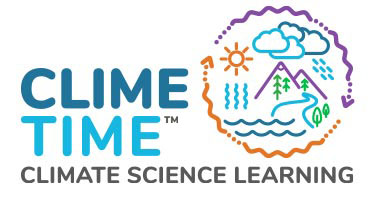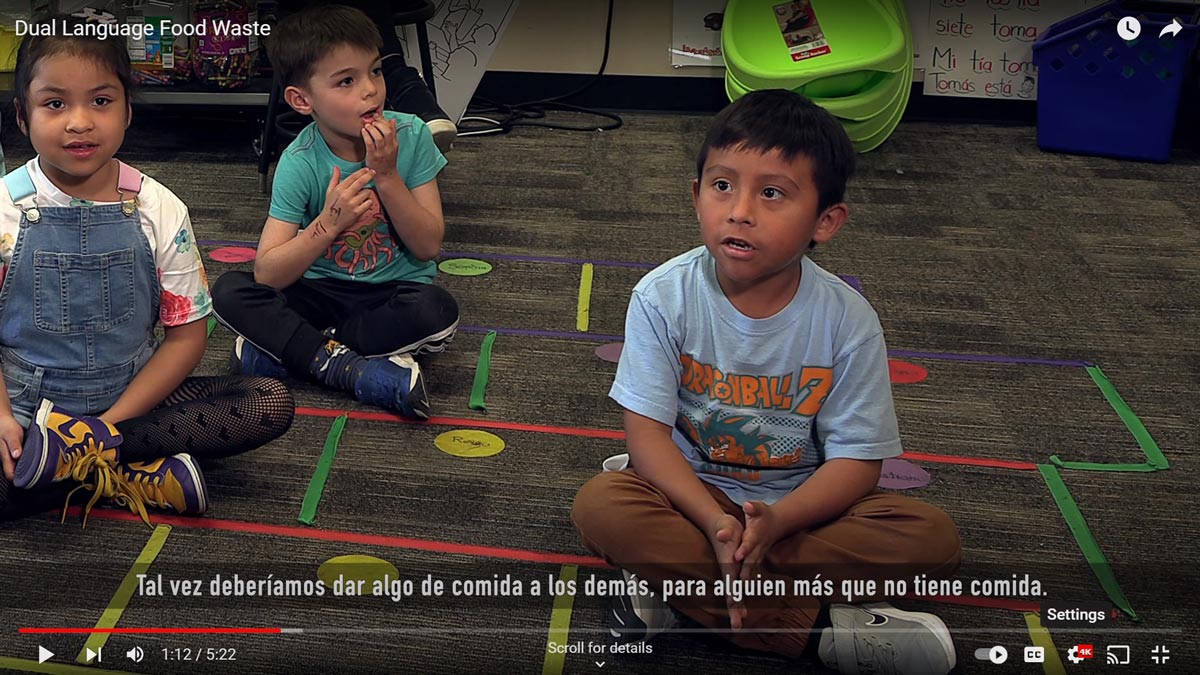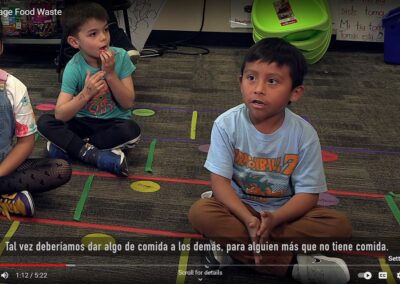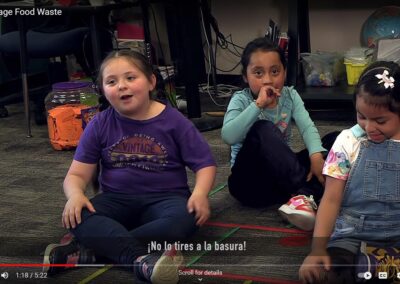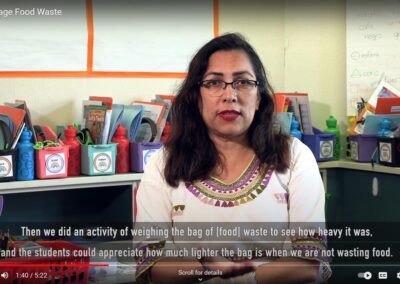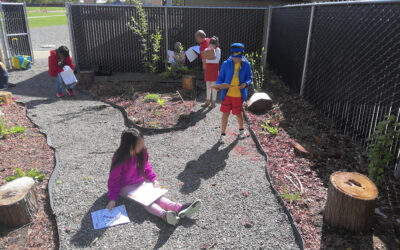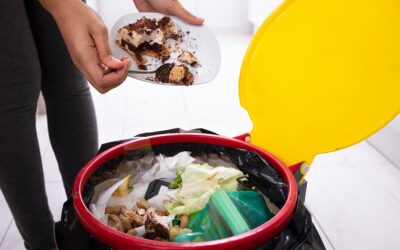What was tried in the classroom?
First, we made a goal that we wanted to minimize food waste. Then I looked at the Pacific Education Institute website and resources to start making plans for different activities so the students could start learning how to avoid food waste. We did an activity of weighing the bag of food waste to see how heavy it was and the students could appreciate how much lighter the bag was when we were not wasting food. I sent these activities and changes to the parents so they could know what we were working on and so they could have resources to talk with their children about food waste. We did the ‘Taste Test’ activity from the ‘Zero Waste Education Pack’ and froze leftover bananas. The students later ate them with chocolate sauce.
How’d it go?
It was an excellent and rich resource to implement with my kids. The learning standards were already there so I didn’t have to look for them. The kids keep asking me, ‘When are we going to do another food waste activity?’ It made science fun and it was easy for students to engage. The most fabulous part was to have resources in Spanish because it’s very hard for teachers to obtain resources for science in dual language.Parent feedback: “It was a very good thing, what the teacher did with the children, so they all learn not to waste food. It’s a good example for the children, especially now with food prices going up. ““During the unit, [my son] actively started talking about wanting to save the food and put all the food away. It seemed like it resonated more with him when he was talking about it in class. He would tell us about it and tell his brother.”
ClimeTime Training
Solutions Oriented Learning Storyline, Dual Language
Classroom
School: Sheridan Elementary School
District: Tacoma School District
Teacher: Dora Kemp
Engaged Children
Parents said their children shared information they learned about food waste with their families.
Kindergarten Students
Kindergarten students at Sheridan Elementary School learned about food waste in both English and Spanish.
